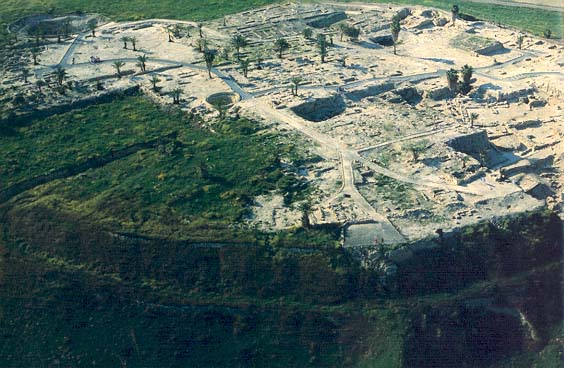Image Details

Richard Nowitz
Although the Bible describes Megiddo as the site of several decisive battles, at least three destruction layers uncovered at the site cannot be matched with conflicts described in the historical record. Rather, the collapsed walls and crushed skeletons excavated here provide strong evidence that Megiddo, located on a major fault line (see map), suffered several earthquakes during the Late Bronze and early Iron ages (1500–1000 B.C.E.).
These frequent quakes may be reflected in the Book of Revelation’s prophecy of a battle at Armageddon (a corruption of Har Megiddo, or Mount of Megiddo) at the end of time: “There came flashes of lightning, rumblings, peals of thunder, and a violent earthquake, such as had not occurred since people were upon the earth, so violent was that earthquake” (Revelation 16:18).
